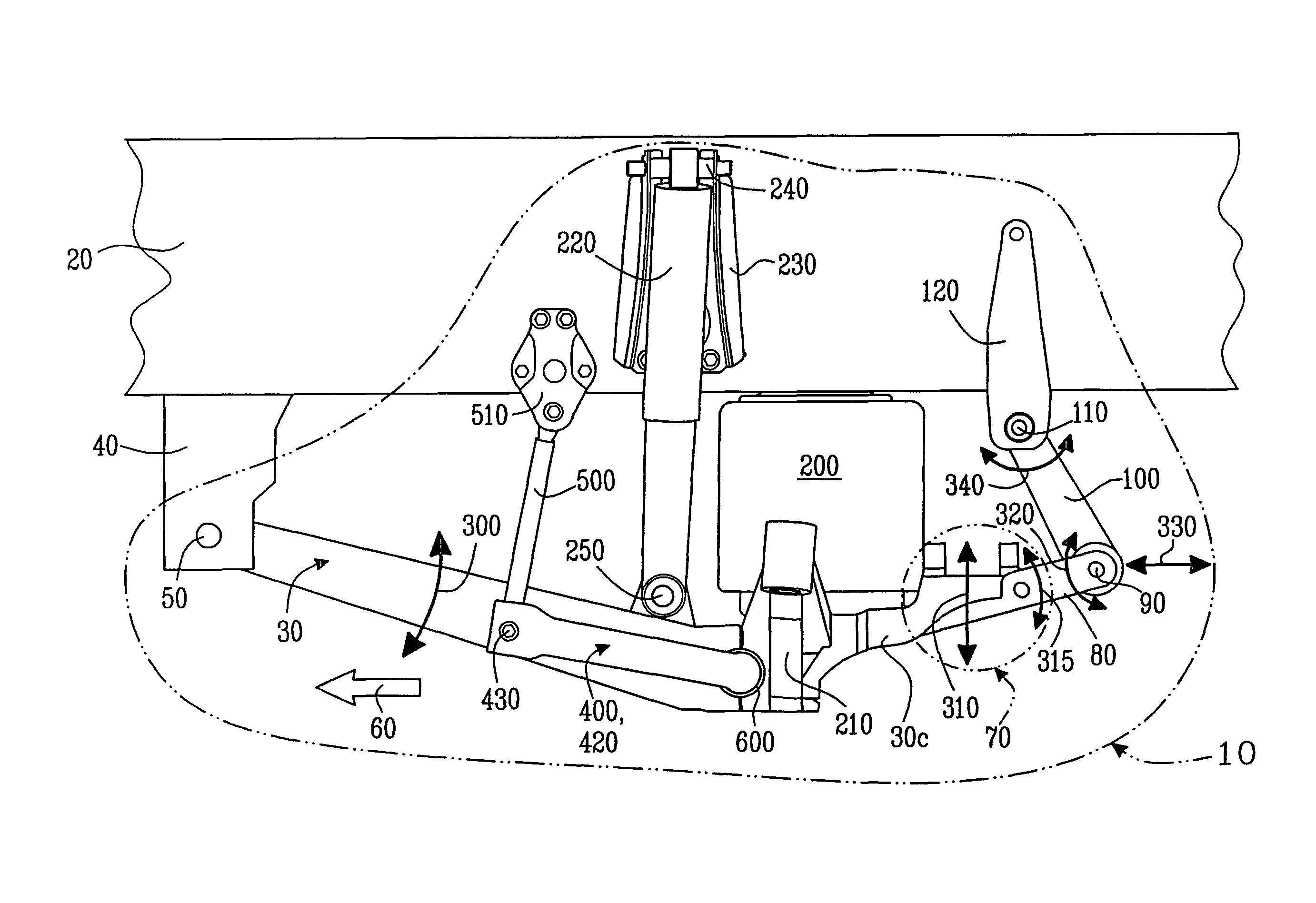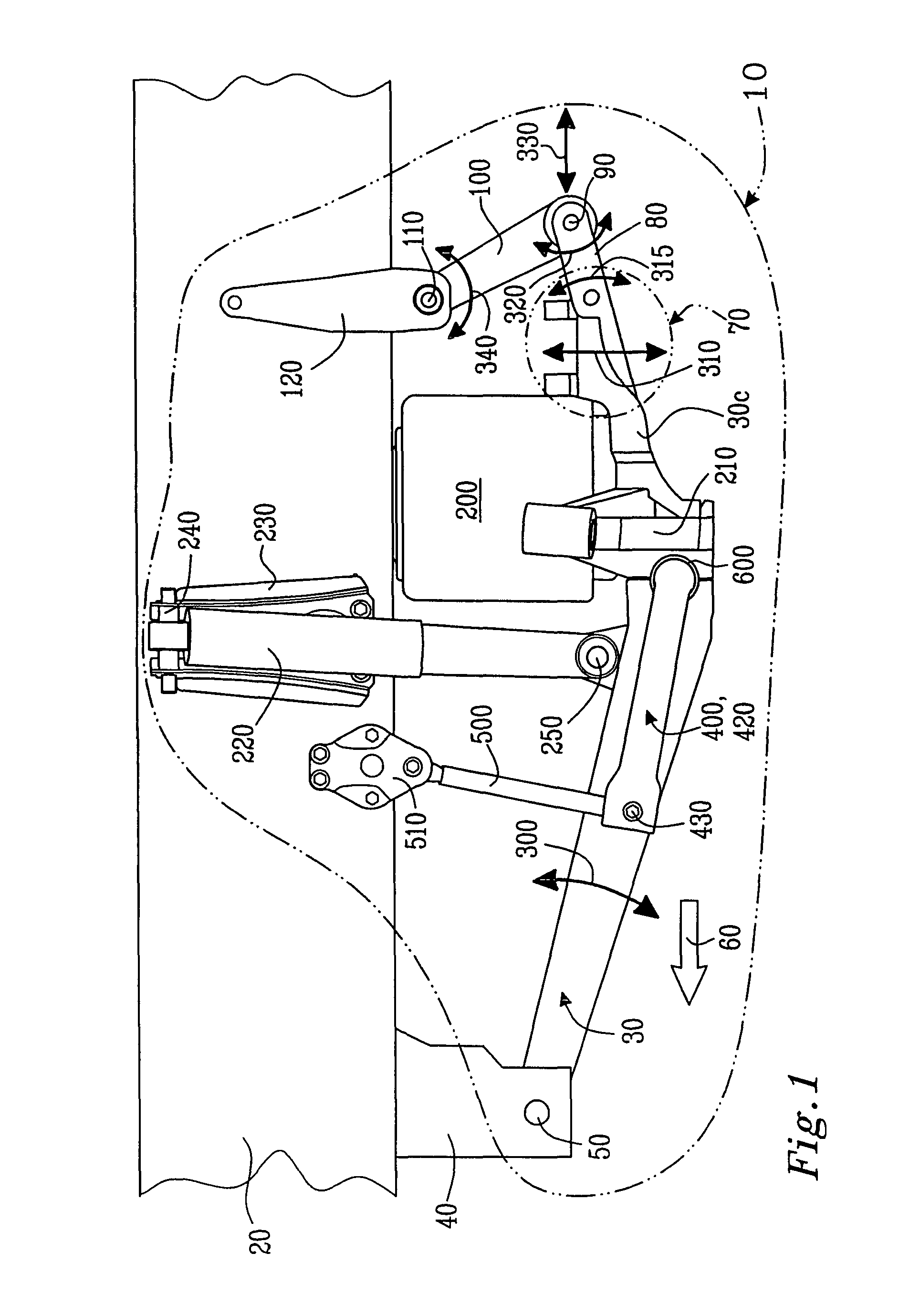Anti-roll bar for motor vehicles
a technology for motor vehicles and suspension systems, applied in the direction of springs/dampers, mechanical equipment, transportation and packaging, etc., can solve the problems of considerable strength of suspension systems, insufficient compactness of conventional systems, and considerable technical challenges to provide enhanced suspension systems. , to achieve the effect of compactness, compactness and improved suspension system for vehicles
- Summary
- Abstract
- Description
- Claims
- Application Information
AI Technical Summary
Benefits of technology
Problems solved by technology
Method used
Image
Examples
Embodiment Construction
[0029]Referring to FIG. 1, there is shown a suspension system indicated generally by 10. The suspension system 10 is operable to provide a suspension function for a road vehicle (not shown), for example a heavy truck or similar goods vehicle. A portion of a chassis frame of the road vehicle is denoted by 20. The suspension system 10 includes a trailing arm beam 30 pivotally coupled at its proximate end via a pivot 50 to a frame bracket 40 mounted onto or integral with the frame 20. For reference, a normal forward direction of travel of the vehicle in operation is denoted by an arrow 60. The trailing arm beam 30 is included at both sides of the vehicle, namely the vehicle is provide with two such beams 30 on its left- and right-hand sides thereof.
[0030]The trailing arm beam 30 is elongate with its longitudinal axis substantially horizontal in operation, and optionally slightly inclined by circa 10 degrees relative to horizontal in operation as illustrated. Moreover, the trailing arm ...
PUM
 Login to View More
Login to View More Abstract
Description
Claims
Application Information
 Login to View More
Login to View More - R&D
- Intellectual Property
- Life Sciences
- Materials
- Tech Scout
- Unparalleled Data Quality
- Higher Quality Content
- 60% Fewer Hallucinations
Browse by: Latest US Patents, China's latest patents, Technical Efficacy Thesaurus, Application Domain, Technology Topic, Popular Technical Reports.
© 2025 PatSnap. All rights reserved.Legal|Privacy policy|Modern Slavery Act Transparency Statement|Sitemap|About US| Contact US: help@patsnap.com



